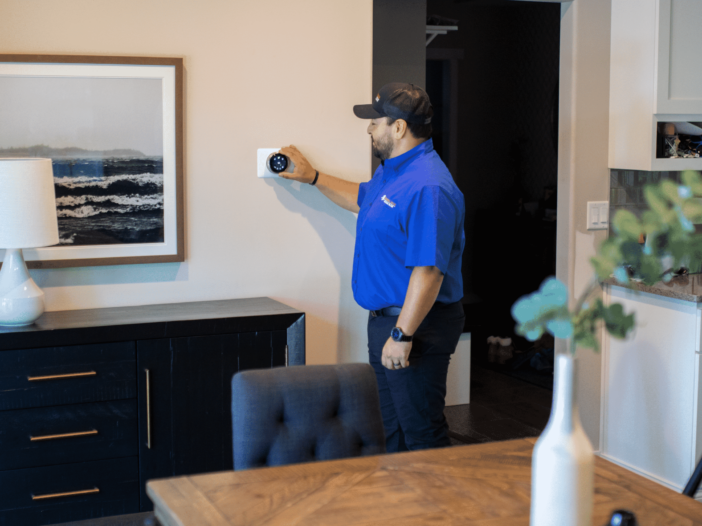
Have you ever noticed that your thermostat features both an “on” and “auto” setting? Do you know when to use them? These two fan settings are points of confusion for many, so let’s have a look at each.
The Difference Between “On” and “Auto”
Setting your thermostat to “auto” makes the fan run only when your home’s air is being heated or cooled. Once your home reaches the desired temperature, it stops. The “on” setting means the fan runs 24/7, whether your indoor air is being heated or cooled, or not.
Why Use the “On” Setting?
The main advantage of the “on” setting is that it improves indoor air quality. Your home’s air is constantly cycled through the air filter, removing more airborne particles. The setting distributes conditioned air more evenly, and the fan lasts longer due to less frequent starts and stops.
A major disadvantage of this setting is that it always uses energy, increasing your monthly energy expenses. In winter when your furnace is off, cold air comes through the vents, making you uncomfortable. The setting also increases moisture levels in the indoor air as a significant amount of the moisture captured by your A/C unit is blown back into your home. The air filter will also need to be changed more often due to constant filtration and the threat of clogging.
Why Use the “Auto” Setting?
The primary advantage of the “auto” setting? Less energy is used because the fan doesn’t run continuously, which makes the air filter last longer as well. The “auto” setting also dehumidifies the air better because moisture captured drains outside when the fan cycles off.
The “auto” setting does have a few disadvantages. It causes less even distribution of conditioned air, and its multiple starts and stops make the fan wear out over time.
If you have more questions about setting your thermostat, contact Sherlock Plumbing, Heating & Air. We serve San Diego County and southern Riverside County.

